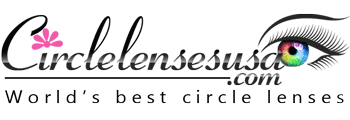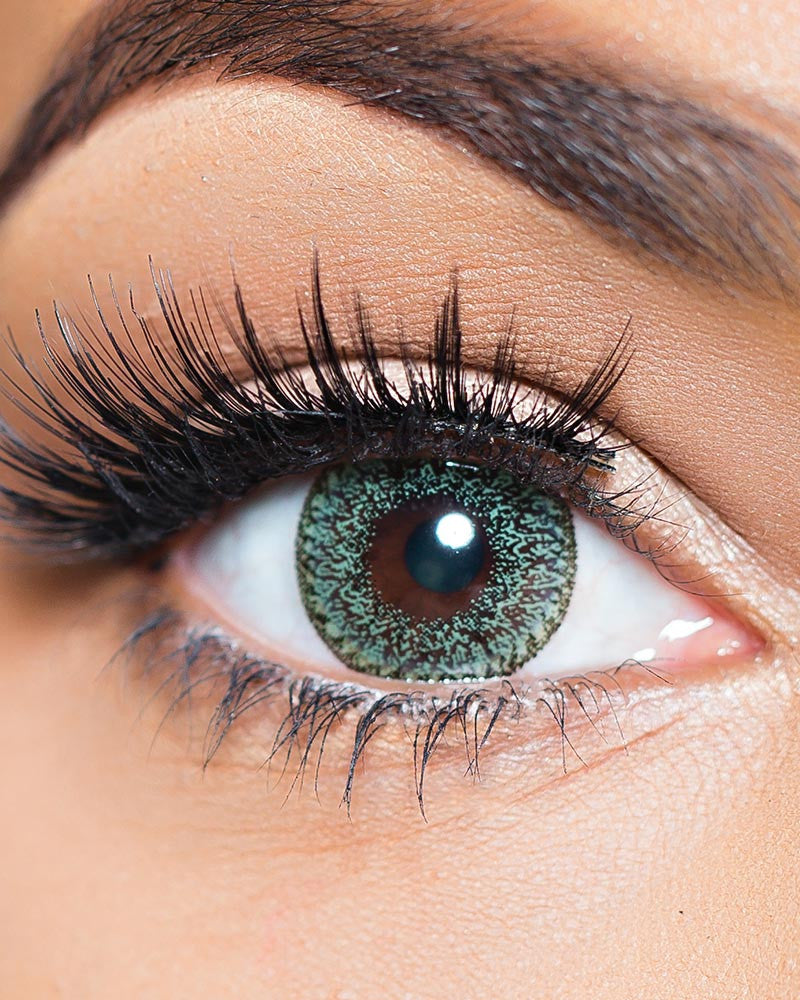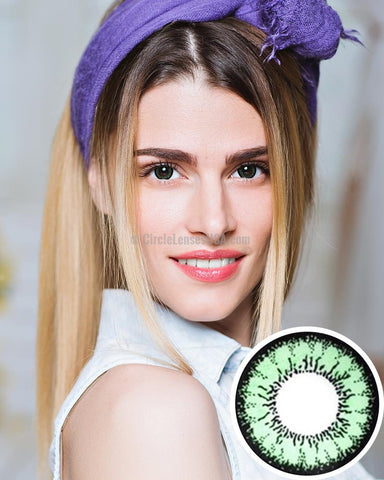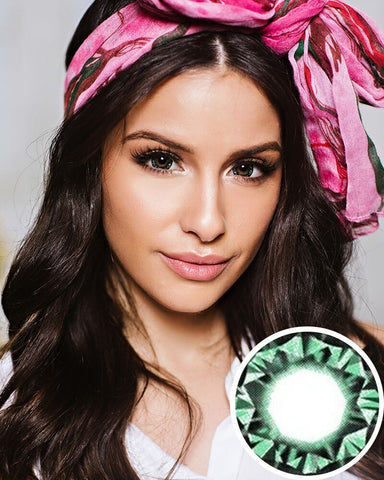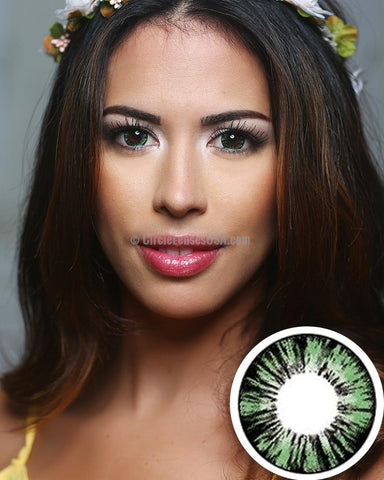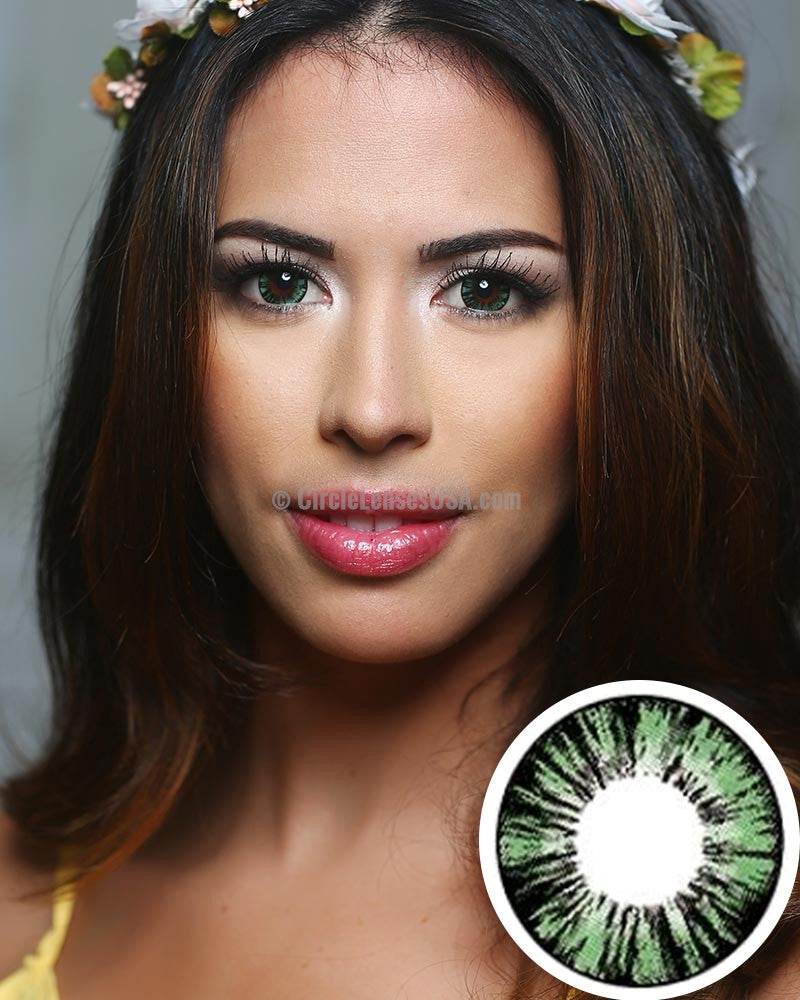An Overview of Green Contacts
Green is the most exotic natural eye color, occurring in approximately 2% of the world’s population. If you find yourself in the other 98% of the population, you may be curious about what you would look like with green eyes. Thankfully, there’s a large enough selection of green circle lenses to satisfy your curiousity.
Size or Diameter
The diameter of green circle lenses can go anywhere from a natural, small diameter up to a large, doll-eyed diameter. Selecting a diameter with green is not that difficult – anyone of any eye color can work any diameter, large or small, as long as they select a lens with the right tones. All you have to consider is what look you’re going for.
Obviously, the larger the lens, the more dramatic the finished look will be. If you want your lenses to look like real green eyes, you’re better off choosing the smallest diameter. If you’re using your lenses for a costume, or even just a dramatic everyday look, diameter can go way up there. If you aren’t sure you want to commit to the largest size, play it safe and opt for a diameter that’s somewhere in the middle.
Tone
The tones are ultimately responsible for the overall effect created by the lens. Some green lenses have tones that are strictly other shades of green. These are perfect for people who already have green eyes, or people who have hazel eyes. The limitations of the tones may make these lenses harder to blend on other eye colors, but thankfully, there is no shortage of alternatives.
Some green lenses incorporate mint colored tones, which help them blend easier with light eyes. These tones provide a little bit of the necessary contrast for masking natural tones of blue. Other green circle lenses will have yellow or gold tones, which work best with brown eyes. If you really want to disguise your natural eye color, make sure you match the tones around the iris of the circle lens with the tones that naturally occur in your eyes.
Limbal Rings
With green contacts, the limbal rings work mostly for esthetics. Green contacts won’t often require a pronounced limbal ring, as green is very easily distinguishable from the white of the sclera. When selecting the style of your limbal ring, you should focus more on appearance than function. The majority of green contacts will come with a black limbal ring, and the thickness is what will make the lenses appear difference.
The thicker the black limbal ring, the more pronounced the green will appear. Black is a perfect contrasting color. Thick rings on a small diameter circle lens will make the eye appear smaller, and thick rings on a larger diameter circle lens will look proportionate. Thin rings on smaller diameter lens will make the eye appear wide and open, where thin rings on larger diameter lenses will slightly reduce the definition and create a dreamy, soft look.
Advice for Blue Eyes
The majority of green circle lenses will blend flawlessly with blue eyes, even if the lens is not very opaque. Lenses that are less opaque can cause a slightly turquoise or jade appearance, depending on the intensity of blue eyes. This won’t look muddy or foggy – it will actually look beautiful. If you don’t desire a turquoise or jade hue, simply opt for a more opaque green lens.
Green lenses that have blue tones in them, particularly around the center of the lens, will blend best with blue eyes if blending is a major concern. Lenses where tones naturally taper, such as three tone lenses, will blend naturally regardless. Most tones work well over blue eyes, so you won’t have to worry about tones causing a foggy appearance.
Advice for Green Eyes
Green eyed people are the lucky ones here. You won’t have to do much work when selecting a green circle lens, since all you’re doing is enhancing your natural eyes. What green eyed people should consider the most is tone patterns. If you want something natural, aim for sunburst style tones. These are lines that radiate from the center of the lens. If you want something extreme, opt for a different design, like a lens with swirl patterns or a diamond pattern.
Advice for Brown Eyes
Brown eyes do dark green lenses very well. Deep emeralds often translate gorgeously onto brown eyes. You won’t have to worry so much about tones if your lenses are already dark. The natural brown of your eyes will create tones that look realistic within a dark green lens. Dark limbal rings will help hide your natural limbal ring while reducing the amount of iris space you’ll need to cover.
If you want a natural looking green, you’ll need to find a more opaque lens. Natural green eyes are much lighter in intensity when compared to brown eyes, and the circle lens you select will need to be able to block out as much of your natural eye color as possible. To help with blending, opt for green lenses with light brown or amber tones. These tones will help make the area around the iris less obvious, giving you a realistic look.
Green lenses are among the most popular, since this eye color is naturally so rare. Because of this, it’s easy to find tons of variations of green circle lens, and you’ll have plenty of luck finding one that will work perfectly for you.
